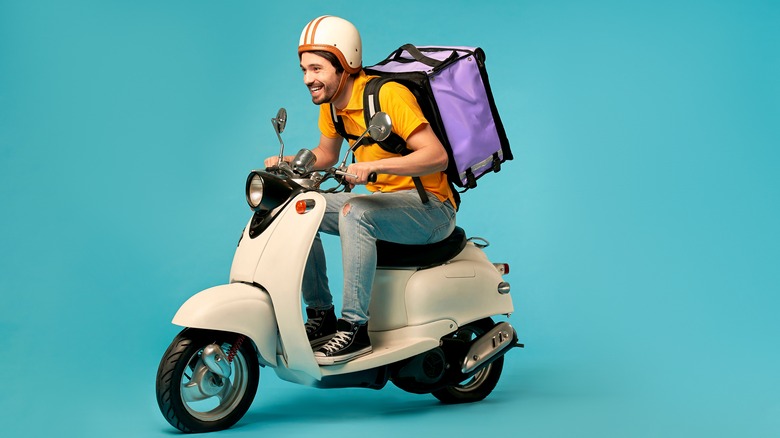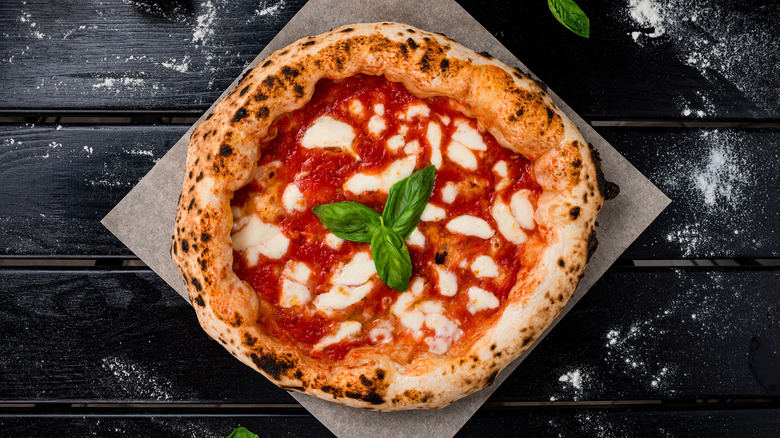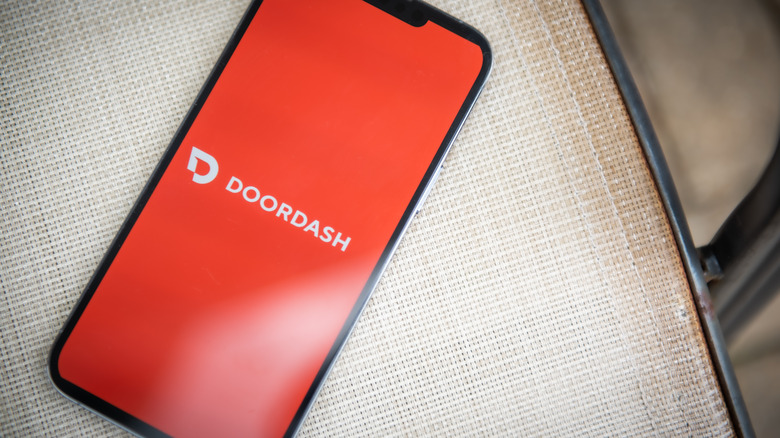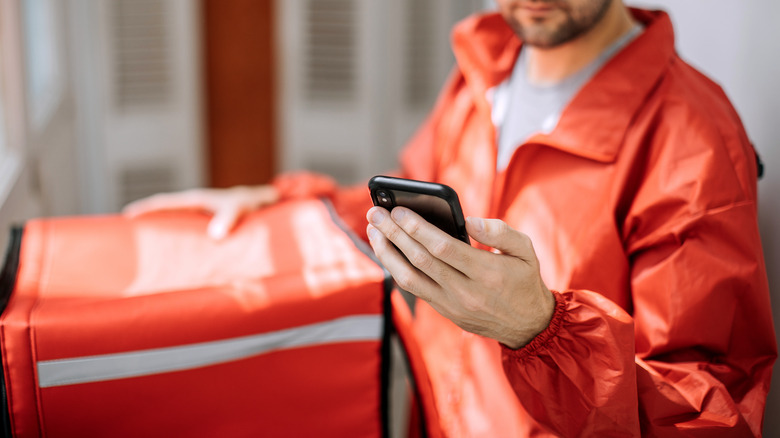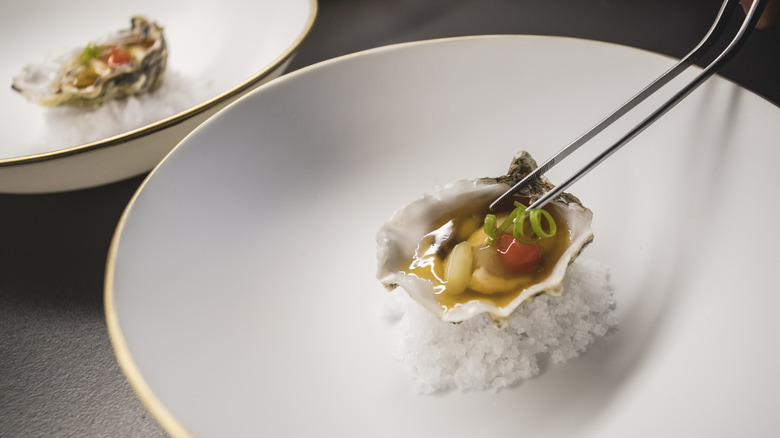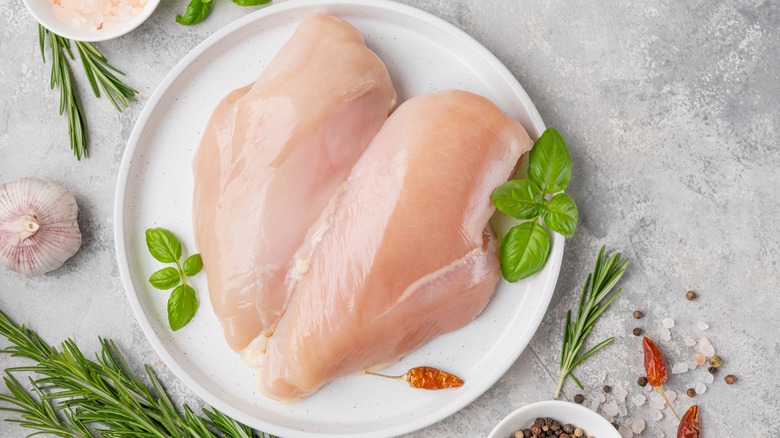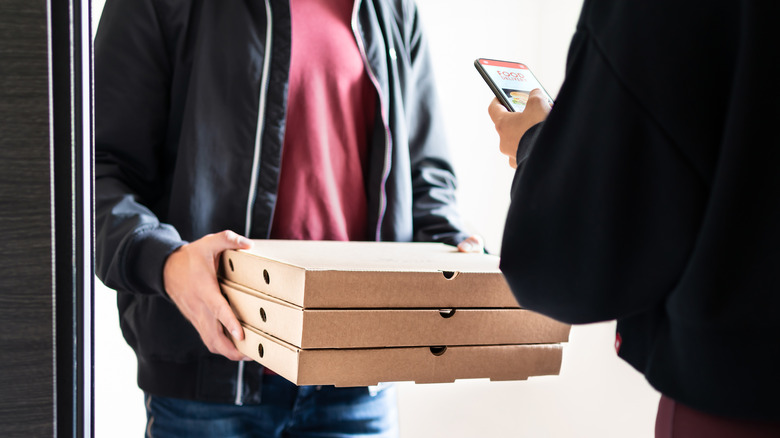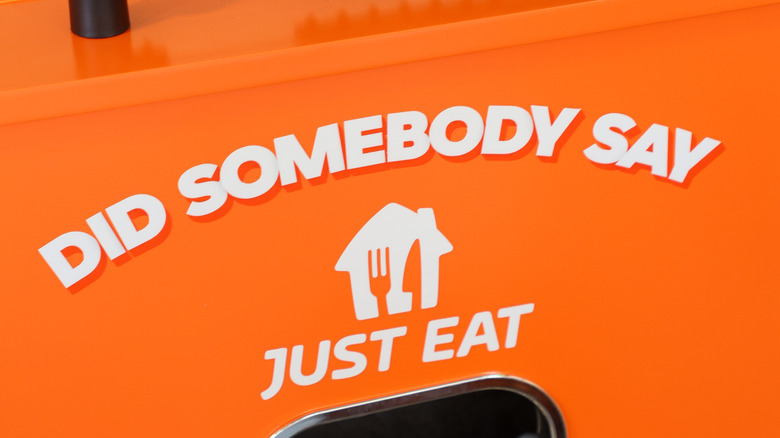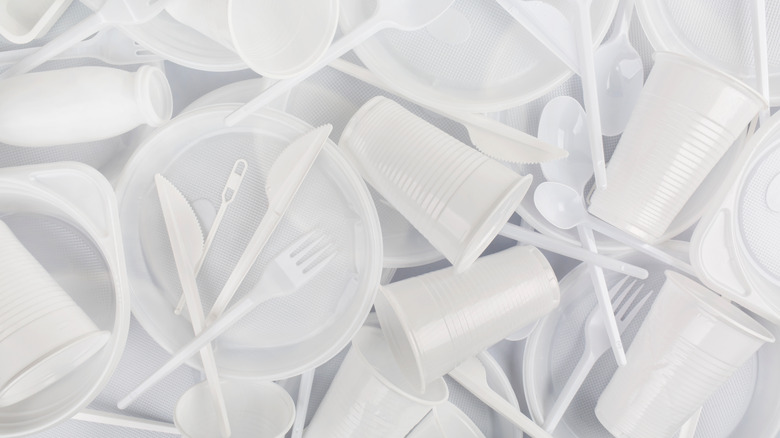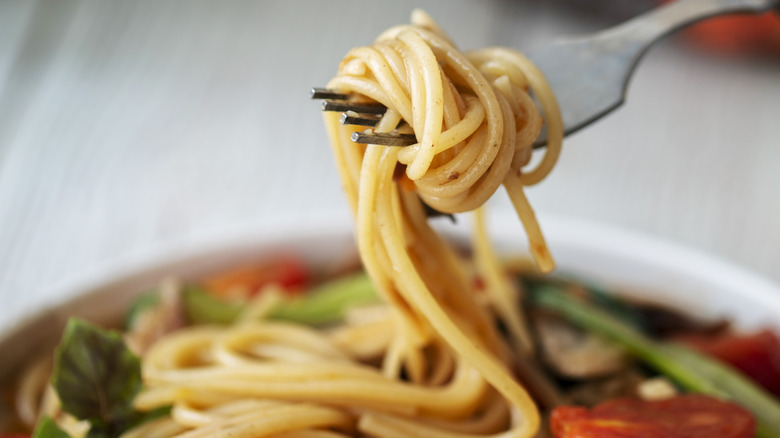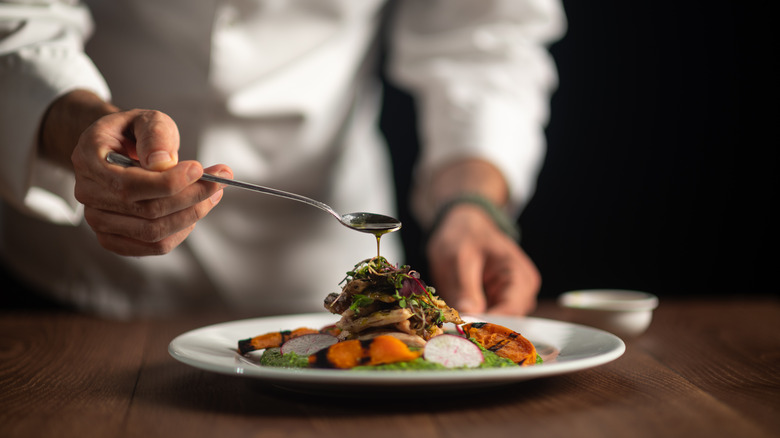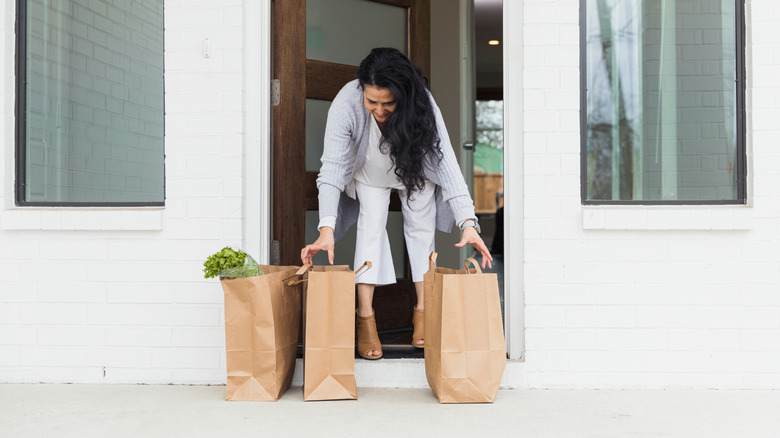It's Time To Wake Up From Our Food Delivery Nightmare. Here Are The 11 Biggest Issues That Need To Be Fixed
Food delivery has gotten me through some tough times. We all relied heavily on it during the pandemic, and we'll never forget the incredible support provided by essential workers, including restaurant and delivery workers. Even now, as the pandemic subsides, many people continue to rely on food delivery for convenience, or because they might not be able to access a particular restaurant due to lack of transportation. Food delivery is here to stay, as made plain by a recent DoorDash survey that found that 83% of respondents ordered as much or more delivery last year than they had the year before. Indeed, I cannot remember when I didn't have food delivery in my life — even if it was just the local Chinese restaurant bringing my pork fried rice from down the street.
But that doesn't mean food delivery is perfect. In fact, a lot can and does go wrong. From higher prices to unfair working practices for drivers battling the gig economy — many of whom are struggling in places like NYC — food delivery can be a bane for clients and service providers alike. Everyone's experience is slightly different, but you might recognize some of the challenges I've come up against in my career as a food orderer, so let's look at them here.
Slippery pizza
Pizza may be the most popular food to order for delivery. In fact, it was most likely the first type of food ever delivered in the Western world, with reports dating back to Naples in 1889. Most of the time, pizza is easy to deliver safely, without the pie getting damaged. But when we're talking about real Neapolitan, Italian, artisanal pizza pies, the equation changes. These tend to be made with homemade sauce, which can be a little wetter than the industrially produced stuff served at chains, and fresh mozzarella, which also carries more water than the dried cheese sprinkled over a slice of Joe's Pizza. This pizza can still travel, but not as well, and delivery services just don't pay that much attention to this subtlety. And who can blame them?
But the fact remains: I ordered from a beloved pizza place in Brooklyn, but all I can remember is that slosh of a pizza that I ordered from there. I can still see the glob of cheese pushed to one side when I opened up the box, like a continental shelf sculpted by glaciers over millennia. On the other side was a perfectly bare pizza pie, looking naked and ashamed. They kindly gave me my money back, but I haven't eaten there since, and I'm sure I'm missing out because of it.
When DoorDash bans you forever
One problem I have never had with food delivery services is security. I've never had my credit card information stolen, my account tampered with, or my identity taken. That I know of. In fact, my problem has been quite the opposite. On a recent evening, my mother-in-law came to babysit my kids while my husband and I went out, so she asked me to order food for her and the children. She generously lent me her credit card for the task. But when I put this information into the app, the site decided I was a criminal, and banned me forever. This also means no DoorDash subsidiary Caviar, my all-time favorite food delivery app.
What went wrong? I put in someone else's credit card information and made an authentication mistake along the way. Normally, this is good. This means the app is doing its job in terms of preventing fraud. But banned forever without recourse? That seems like a bit much, especially since so many use our parent's credit cards to buy food (with permission). Plus, you might say it's time for us to move out and get a job — and we have, but who's going to say no to free food? Thanks to DoorDash, me.
The order takes too long
There is a thing called a clock, and I keep several in my house, including one on my person. I use them to see what time it is and to gauge what time it will be when my food arrives, based on the estimated minutes provided in a food delivery app. Yet somehow, inexplicably, my math never adds up properly. The food always arrives at least 10-20 minutes after it said it would. Somewhere along the way, as I order my food and hit send, those estimated 10-20 minutes become 30-40 minutes with a mere click.
This may be because food delivery apps have yet to catch up with a very real staffing shortage that exists in the restaurant industry, including food delivery. Although you may be spotting Uber Eats and company out on a scooter, bicycle, Vespa, or car while you're walking around town, there are still not enough people to meet the overwhelming demand of the food-ordering hordes. Although this problem has primarily affected pizza chains and their own delivery drivers, Reuters reports that most delivery services have been affected in the U.S. and abroad, although it seems that DoorDash has managed to weather that storm. Too bad for me.
Your favorite restaurant doesn't offer delivery
The best thing about food delivery for me is the experience of enjoying my favorite meals in the comfort of my own home. It means I don't have to think about ingredients, worry about messing up a recipe, or spend ages prepping onions. But the food has to be good — otherwise, all the enjoyment goes out the window. So when I'm in the mood for Chinese street food from that hole-in-the-wall restaurant ten blocks away that only uses fresh ingredients and makes my favorite soup dumplings, I'm setting my expectations high, only to be crushed by the fact that this restaurant has chosen to eschew delivery entirely, only offering pick-up or dine-in options.
I'm not the only one who feels this way. It makes sense that high-end restaurants serving tasting menus wouldn't do delivery. But many other top joints, even ones that serve more casual fare, don't necessarily provide this service. Yet that truffle grilled cheese with bechamel isn't going to walk out of The Hamilton on Amsterdam and show up at my house, while the pig's head toast with pickled peppers from The Four Horsemen probably doesn't belong on my Ikea dining table. But more and more restaurants these days are ditching delivery and sticking to old-fashioned dining in. Even Olive Garden tends to go dark on delivery apps at peak times. As the Wall Street Journal reports, they do this to prioritize their in-person diners. I can't argue with that.
Having to resolve bad food delivery orders
Sloppy pizzas aren't the only scourge of the food delivery world in terms of quality. Sometimes you might get undercooked chicken and only discover the issue once you've bitten into your prey. This is what happened to me one evening when I ordered food because my kitchen was being renovated. As you can imagine, I'd been ordering quite a lot of food during this period, so I opted for a less expensive place than my usual and ordered from the rotisserie chicken place around the corner. Quick, cheap, and easy.
Well, not exactly. When the food came and I took that fateful bite, I was less than amused, but luckily, what happened next caused my appetite to wither away completely. Out of a sense of courtesy, or naivete, I decided to call the restaurant first and explain the problem, and see if they wouldn't mind sending me a new dish –- it was dinner time after all, and I had two hungry children and a husband to feed. This seemed like the quickest route to food. To my consternation, the woman on the phone asked me to bring the food back so they could finish cooking it. I said no, as anyone would, whereupon she started yelling at me and telling me not to come back. I have obliged ever since. Thankfully, I saw the light and contacted the food delivery app for redress, but all of this could have been avoided had I not ordered delivery.
High delivery costs
It makes sense that you should have to pay extra for your food to be delivered than if you were to get dressed, go outside, and make your way to the restaurant yourself. All that takes work, and having your food come to you is like asking someone to do that work for you. I'm not ashamed to admit that I once paid $20 in delivery fees to obtain $10 worth of Doughnut Plant donuts because I wanted them bad and was anything but inclined to leave the house. But the problem runs deeper than delivery fees. The price of the food itself is often higher, even though it's the same food you would have gotten in the restaurant for a lesser price!
This is because many restaurants charge a premium on their delivery menu compared to their in-person menu in order to help them cover the commissions levied by the apps, especially if you live in Virginia Beach, the US city where you'll pay most for delivery. A New York Times investigation found that the cost to the consumer can be up to 91% higher when using an app than when dining in a restaurant. Convenience is convenience, and donuts are donuts, but seeing the numbers like this really puts things into perspective.
Unfair conditions for food delivery drivers
There is a spot of graffiti on a wall near my house in Turin, Italy, that reads "Just hate Just Eat." Just Eat is a London-based food delivery app that operates in Italy in a very similar way to GrubHub and the rest of them. Although I have no way of knowing whether this particular piece of street art was written by a potential Just Eat customer, a driver, or a third party who just wanted to make a point, it certainly brings to mind the plight of food delivery drivers in the US and abroad. If you've ever seen one whizz by you on their bicycle in the rain, cold, or devastating Canadian wildfire smoke, you'll have noticed that they're no slackers.
Even so, they hardly get treated fairly. As independent contractors, they don't receive health insurance or job security, so the least anyone owes them is a fair wage. Luckily, New York City agreed to provide food delivery workers with a $17.96 per hour minimum wage before tips, up from an average of $7. This initiative may not be taking effect everywhere, but it's a start.
A lack of utensils
I don't know about you, but I do most of my food delivery ordering when I'm staying in a hotel. Those high delivery costs are no joke, so I tend to cook more when I'm at home. One thing I don't usually have in a hotel room is a kitchen, which means I don't have utensils either. Yet try as I might, I only get my utensils through my food delivery app only about 50% of the time. I must admit that sometimes I simply forget to click the utensils box, and that's on me, but most of the time I do remember, and I'm still left having to run down to the hotel front desk to ask for whatever cutlery they can spare.
Although it is a little annoying, it's no great tragedy, especially since the initiative –- the fact of having to choose utensils, including in New York, instead of them just being automatically added whether you need them or not –- is for a good cause. In New York City that cause is called the "skip the stuff law," which aims to reduce plastic waste by limiting the distribution of unnecessary takeout cutlery, among other things.
Limp noodles
Many items on Chinese restaurant menus tend to travel well, meaning they taste just as good eaten at home, after delivery, as they do at the restaurant. Or at least close to it. But there are exceptions, which is why it's important to remember that just because you're able to order an item for delivery, it doesn't mean you should.
I learned this the hard way with an order of congealed dumplings. Something about the packaging caused excess moisture to form inside, drowning the dumplings and causing them to turn chewier than they were ever intended to be. Or at least that's what I think happened –- it's hard to know what really goes on with your food between the moment it leaves the restaurant and the moment it arrives at your doorstep. Some people have even reported to Today that their delivery driver helped themselves to a few bites of their meal. I shudder to think of this ever happening to my food, but the truth is that quality control is an issue and customer dissatisfaction with restaurant delivery is real, whether it be pizza slippage or congealed dumplings.
Missing out on the restaurant experience
For me, the main point of ordering food delivery is to avoid having to go out and travel to a restaurant. I want something low-maintenance, that doesn't require cooking or going out in public. But there is a part of me that never feels quite satisfied when the delivery actually arrives. There is that magical moment at a good restaurant when your food comes and you can barely contain yourself. The feeling of opening that hot, wet delivery container doesn't even come close. This is in part due to the presentation –- we eat with our eyes as much as our stomachs -– but it's also because some of the freshness of that food is lost somewhere along the way, whether the delivery driver takes a bite of it or not.
I feel especially sad when I order food from a reportedly good restaurant. I note how the takeout is good, but I'm always left wondering how much better it would have been had I consumed it at the restaurant. Food chemistry can be fragile, and certain items should be consumed immediately or not at all. But who am I kidding? None of this is going to stop me from ordering delivery again. Maybe the key is to dish everything out onto the nice china, dim the lights, and put on some low-key jazz.
Out of stock grocery items
So far we've talked about food delivery in terms of meals, but the category can also include groceries –- indeed, some apps deliver both meals and groceries. My biggest problem with the latter practice has always been out-of-stock items. Granted, I'm picky. I have to have the Bob's Red Mill quick-cooking oats because Quaker Oats just won't do. But when the list of substitution requests starts to pile up, it feels like it's not me, it's the app. It's enough to make me want to put on some pants and go look for the items myself.
I'm not the only one to experience this annoyance. During the pandemic, this was a big problem with Amazon Fresh deliveries –- they just didn't have enough stock to meet the sharp rise in demand. But since then, the problem has persisted across grocery delivery platforms. It's hard to know whether your favorite ice cream just isn't there or the shopper can't seem to find it, but I have found that it helps when you can choose which grocery store they shop at. The Stop & Shop in Rockaway Park serves a different clientele than the one in Flushing, so if you order delivery expecting groceries to come from your nearest store, you might be surprised to learn that a long-time stalwart isn't available because the shopper is in a different location.
